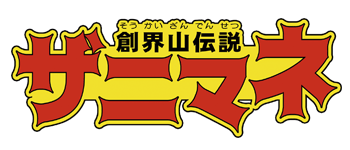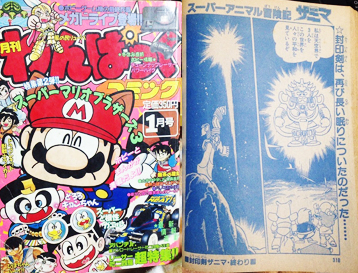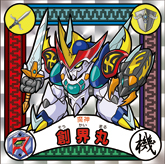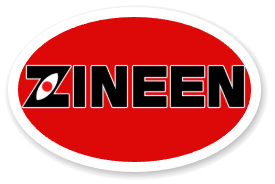
Collaborative artist biography: Kenta Mizutani / Kennosuke Mizutani

In the 80’s, he was in charge of the illustrations for “Seiriken Zanima” released by TOHATO, “Prince of Jusco”, a PR toy for the current Aeon (formerly Jusco), and “Majin Eiyuden Wataru Gum (sticker version)” released by Kabaya. He was also in charge of the character design for “Robot Ponkots” released on Game Boy in the 90’s, the original character design for the TV animation “Genji Tsushin Agedama”, and the drawing for “Ucchan Nanchan no Nanma-kun (manga version)” serialized in Comic Bonbon.
◆What is the Sealed Sword Zanima?

An omake sticker that came with snacks released by Tohato in the 1980s. On the left is Leeza from “Sealed Sword Zanima”. On the right is the homage reprint of Leeza from Zanimane. Both were drawn by the same artist, Kenta Mizutani (Kennosuke Mizutani). You can see that the touch of the same character has changed quite a bit over the past 30 years.

Incidentally, back in the 80’s, a magazine called “Wanpakku Comic” published a manga about “Zanima. The photo shows the precious last issue. It also had a special feature on stickers.
◆The Meaning of the Legend of Mount Sokae “Majin Eiyuuden Wataru (STICKER Version)

At the time, “Zanima” was designed to be played as a sticker game, so I decided to take over that element of the game. It’s a simple game where you make a mountain by combining sticker marks, and if you get to the top, it’s worth it. Since the game is about mountains, I decided to use since I was also in charge of the illustration for “Majin Eiyuuden Wataru (sticker version)”.
Incidentally, “Mahashin Eiyuuden Wataru” is an original work by Red Company. Necros fortress painter and Tengai Makyo original creator Hiroshi Adachi came up with the original idea for the world of “Majin Eiyuuden Wataru”. Originally, Seal was the first project, but when a request came in for a vacant anime slot, the Seal project was turned over to the anime.
STORY
A game in which players compete for the top of a pyramid. Each player stirs up the stickers and deals out 12 at a time, alternating one at a time so that six stickers are lined up at the bottom. When placing stickers on the top row, the player wins if he or she repeatedly places stickers with the same attribute mark alternately to get to the top. Or, if you can’t place a sticker, the player with the least number of cards in his or her hand wins.




